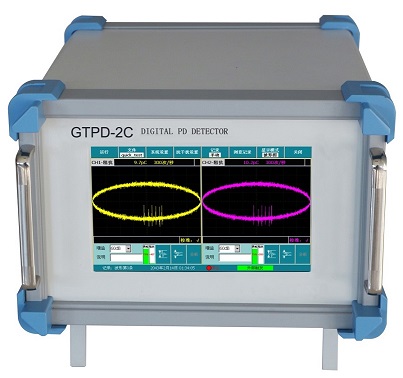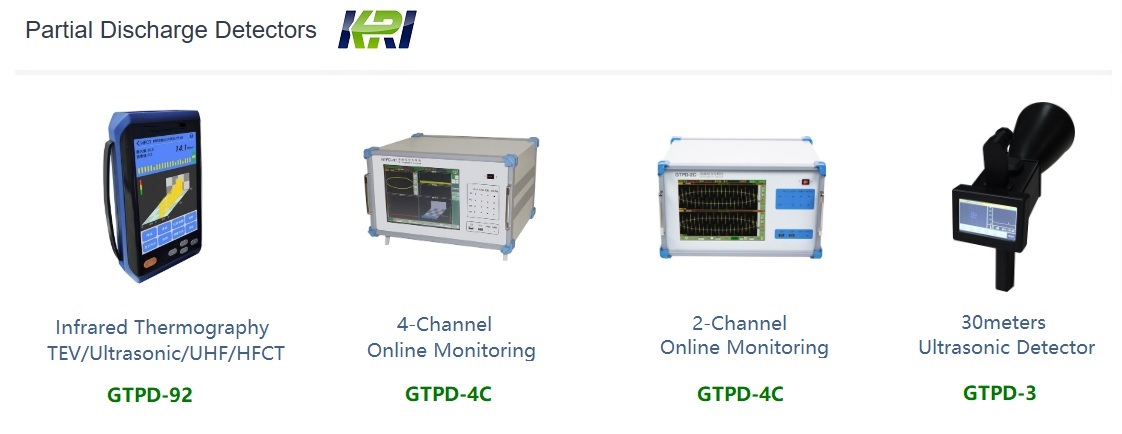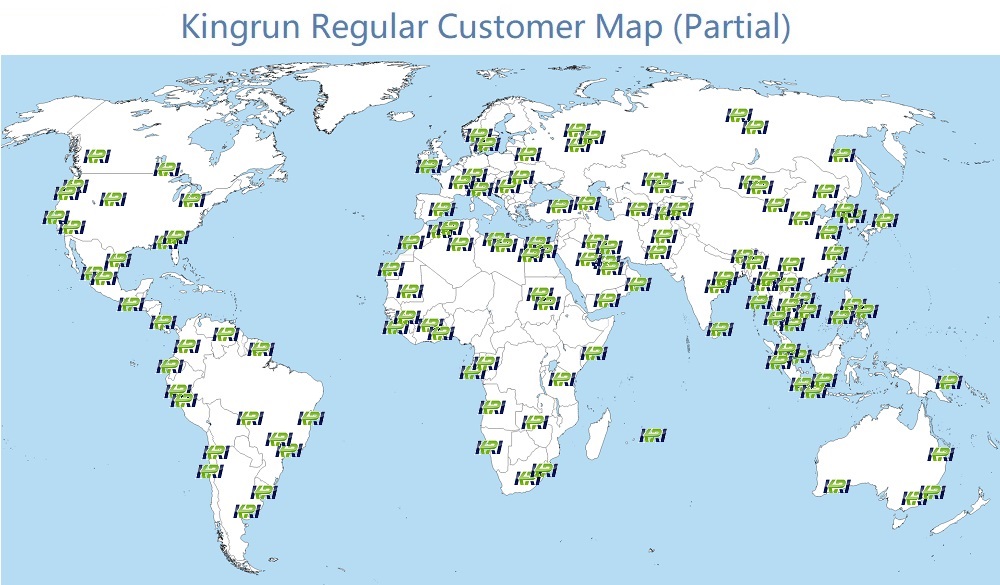Partial Discharge (PD) testing is an essential method for evaluating and monitoring the insulation condition of GIS high-voltage switchgear and transformers. The main reasons and significance of PD testing include the following:
1.Early Defect Detection and Warning
Partial discharge is a localized weak discharge phenomenon within the insulation system, often caused by the presence of micro-bubbles, cracks, impurities, aging, or manufacturing defects. PD testing can detect these hidden issues at an early stage, preventing the long-term degradation of the insulation system and stopping minor defects from evolving into major failures.
2.Ensuring Insulation Performance
GIS high-voltage switchgear and transformers operate under high voltage, complex environments, and gas insulation conditions. If partial discharge is not controlled, it can lead to localized deterioration of insulation materials, accelerating insulation aging and even causing insulation breakdown. Regular PD testing helps assess the health of insulation materials, ensuring stable insulation performance and operational safety.
3.Preventive Maintenance and Lifespan Management
By monitoring partial discharge signals, operators can evaluate the condition of the equipment and schedule timely maintenance or replacement, achieving preventive maintenance. This not only prevents unexpected failures but also extends the service life of the equipment, ensuring the long-term stable operation of the power system.
4.Quality Control and Process Optimization
Conducting PD testing during the manufacturing and installation stages helps identify defects in design, production, or installation processes. Timely feedback and corrections improve product quality and overall process standards, reducing operational risks in the later stages.

GTPD-2C Digital partial discharge detector is the digital partial discharge measuring and analyzer adopting the complete new generation technology. It is suitable for partial discharge detection in manufacturing factory and field handover test of transformers, generators, CT/PT, bushings, GIS, capacitors, power cables, switches and other high-voltage electrical equipment with various voltage levels and capacities.
Functions and Features
1. Portable anti-seismic, compact structure, simple operation, suitable for on- site partial discharge detection and location analysis.
2. The test file management function, it realizes data recording, viewing and analysis.
3. It can be used together with a variety of sensors to realize the various kinds of detecting.
4. The testing data can be automatically saved or by manual, and be browsed and played back to analysis automatically.
5. The powerful anti-interference function enables it to be used in complex field.
6. Pulse analysis, spectrum analysis and other spectrum analysis functions.
7. The statistical analysis of selected channels including Q-ɸ, N-ɸ, PRPD, and PRPS can provide users with the characteristic Atlas of current discharge, so that users can accumulate the characteristic Atlas of different discharge types.
8.Partial discharge detection data can be sent to the computer through SD card to complete the creation of user reports.

|
GTPD-2C Technical Characteristic |
|||
|
|
|||
|
Quantity of Channel |
2 electrical signal interface 1 external synchronization interfaces |
Measuring range |
0.1pC~1000nC |
|
Sampling rate |
0.5M, 1M, 2.5M, 5M, 10M, 20M |
Capacitance of the specimen |
6pF~250µF |
|
Sampling accuracy |
12bits |
Sensitivity |
0.1pC |
|
Measuring range |
60dB, 40dB, 20dB, 0dB, -20dB |
External synchronous frequency input range |
30Hz~400Hz |
|
Frequency range |
20kHz-100kHz, 80kHz- 200kHz, 40kHz-300kHz |
External synchronous voltage input range |
50mV~2V |
|
Linear error of this range |
5% |
Power supply |
AC220V/50Hz |
|
Display |
|||
|
Display screen |
7 inch true color LCD display |
Resolution |
800×480 |
|
Storage |
|||
|
Physical storage |
256MB DDR2, operation memory |
SD card |
Standard 16G, can be up to 32G |
|
Interface |
|||
|
RS232, USB, Power interface, electrical signal interface, SMA interface, SD card interface, RJ45 interface, grounding button |
|||
|
Common description |
|||
|
Size |
350×245×175mm |
CPU |
Main frequency 533MHz |
|
Weight |
5.8kgs |
Operation system |
WINCE6.0 |
Infrared Thermography (IRT) and Partial Discharge (PD) testing are two widely adopted condition monitoring techniques in modern power systems, each with distinct applications and technical strengths. IRT detects surface temperature anomalies to identify potential faults caused by increased electrical resistance, such as loose connections, overloads, or deteriorated contacts. Based on passive thermal radiation measurement, IRT is simple to operate, allows for non-intrusive and live inspections, and is particularly effective for components like switchgear, busbars, and cable terminations. However, it has notable limitations: it can only detect faults that produce significant heat and cannot identify early-stage insulation degradation or internal defects. The results are also influenced by ambient temperature, surface emissivity settings, and operator experience. In contrast, PD testing detects small electrical discharges occurring within or on the surface of insulation systems. These discharges often indicate the onset of insulation breakdown, such as voids, cracks, surface contamination, or moisture ingress, allowing for much earlier detection of critical insulation failures.

In summary, IRT is well-suited for identifying resistive faults and surface heating, while PD testing is more effective at detecting internal insulation degradation at an early stage. Integrating both methods enables a comprehensive asset monitoring strategy, combining surface thermal detection with internal dielectric diagnostics. Industry standards recommend joint application, and the reliability of the results depends heavily on the competency of the operators. Certified training (e.g., FLIR Level I/II for thermography or PD specialist training from EA Technology) is strongly recommended. By selecting the appropriate method based on asset type, voltage level, and environmental conditions, utilities and asset managers can significantly improve system reliability and reduce the risk of unplanned outages and catastrophic failures.




turn ratio tester, transformer test instrument, winding resistance tester, tran